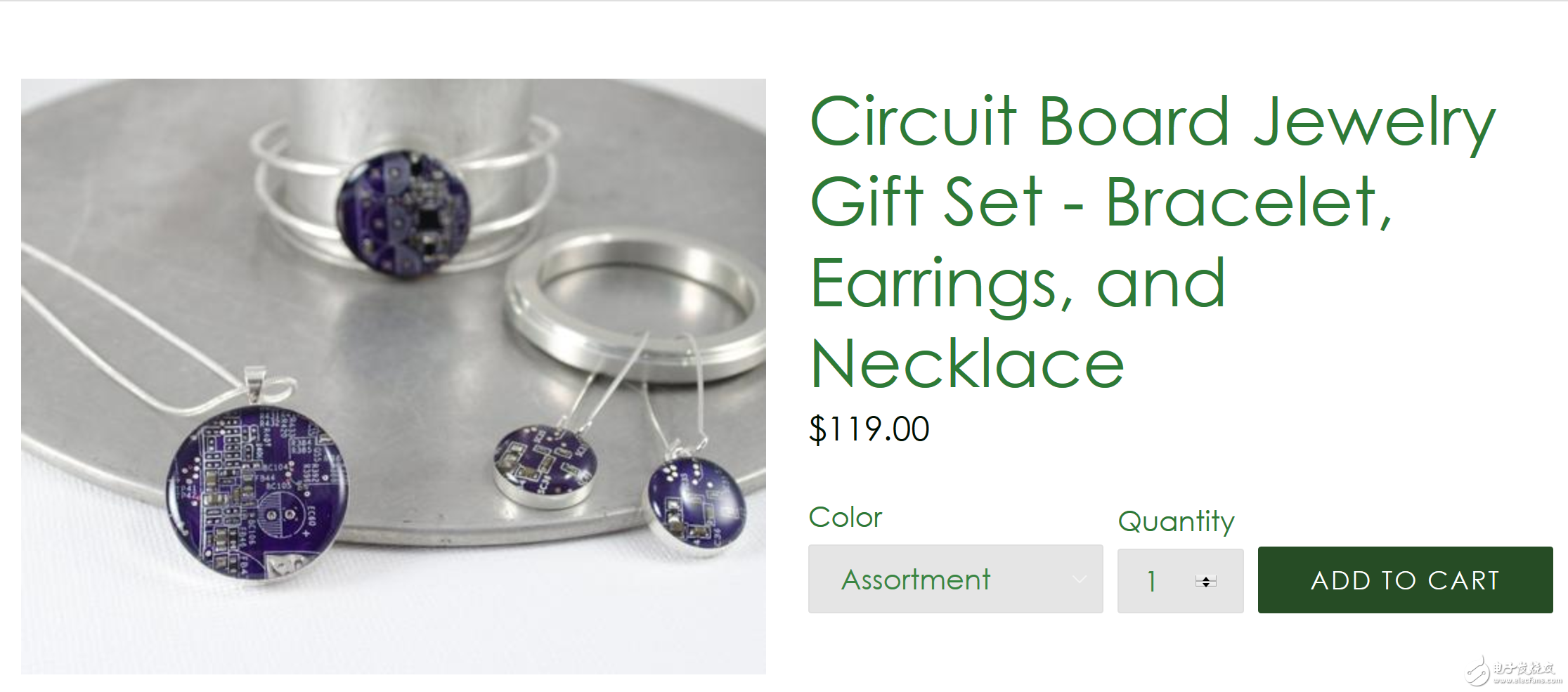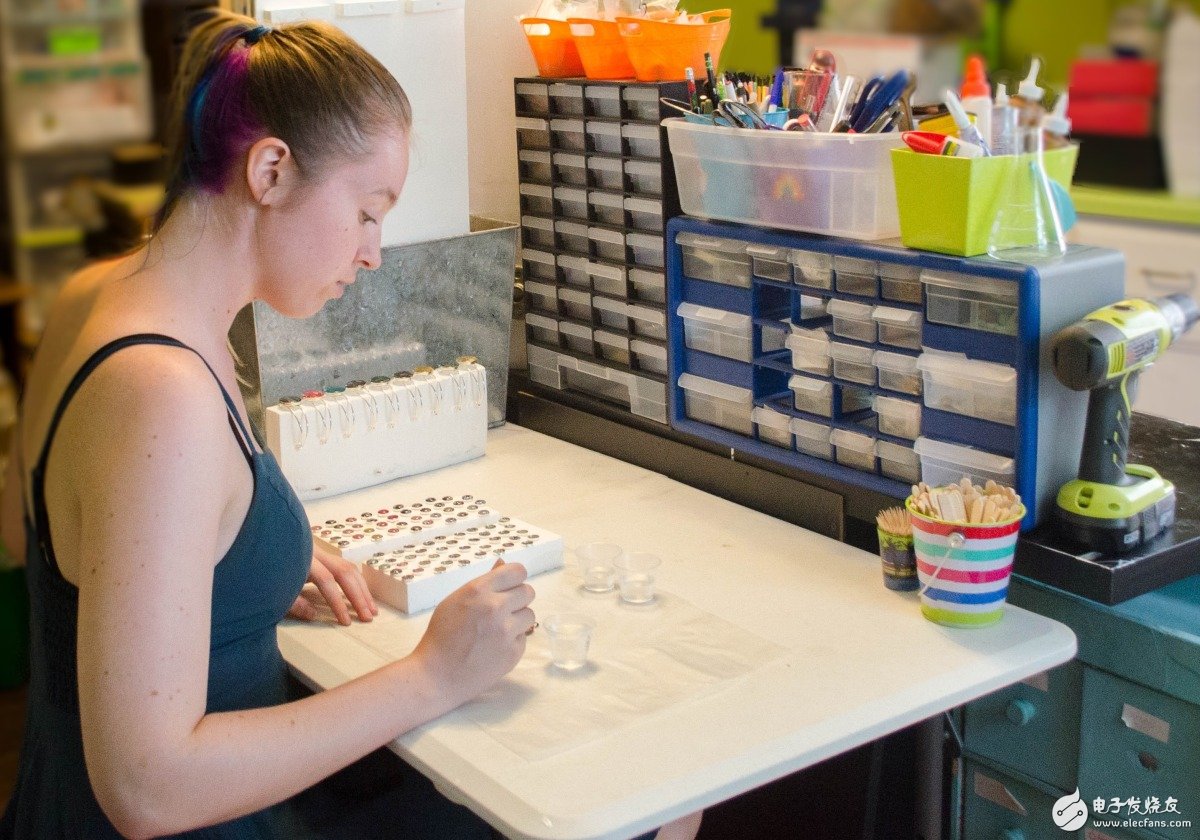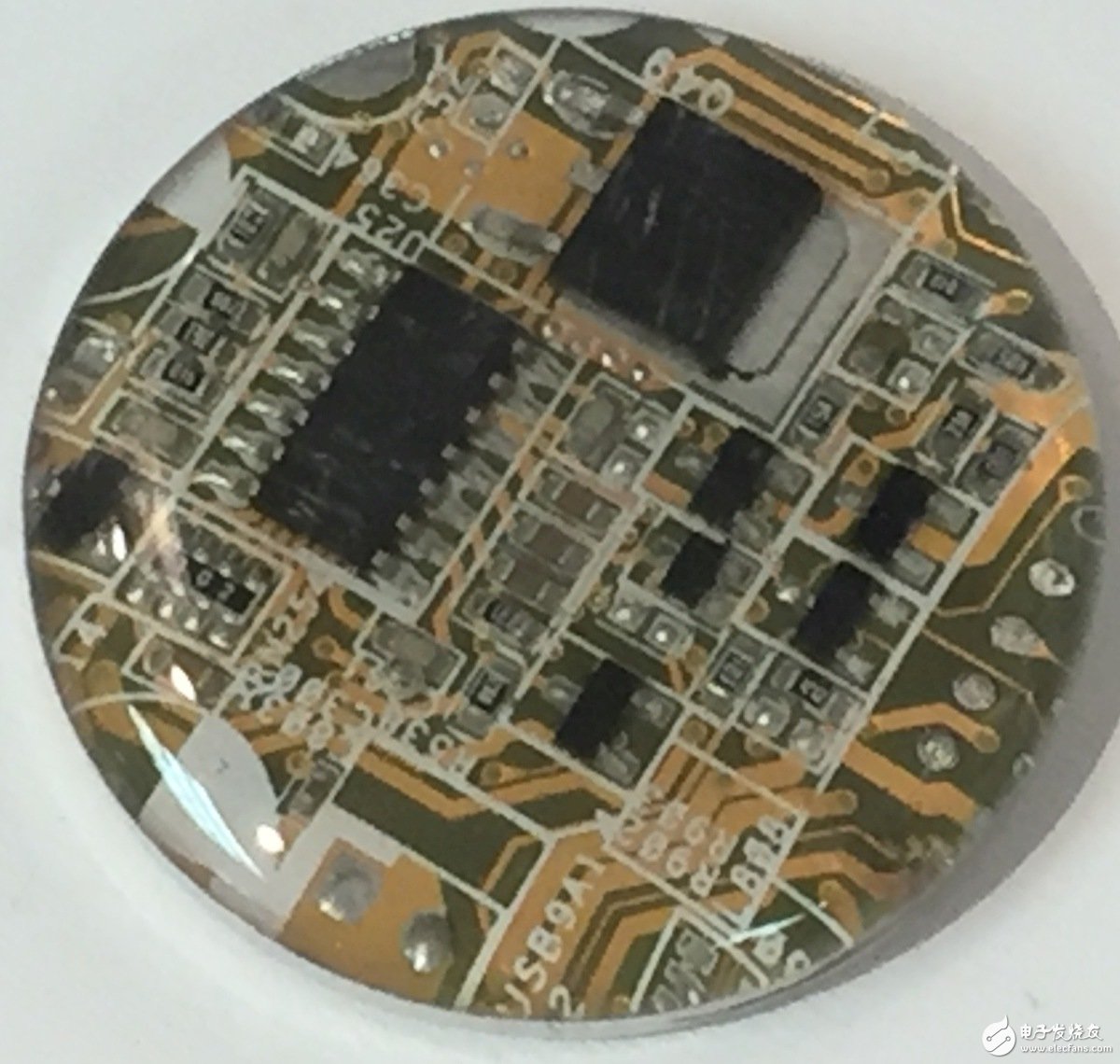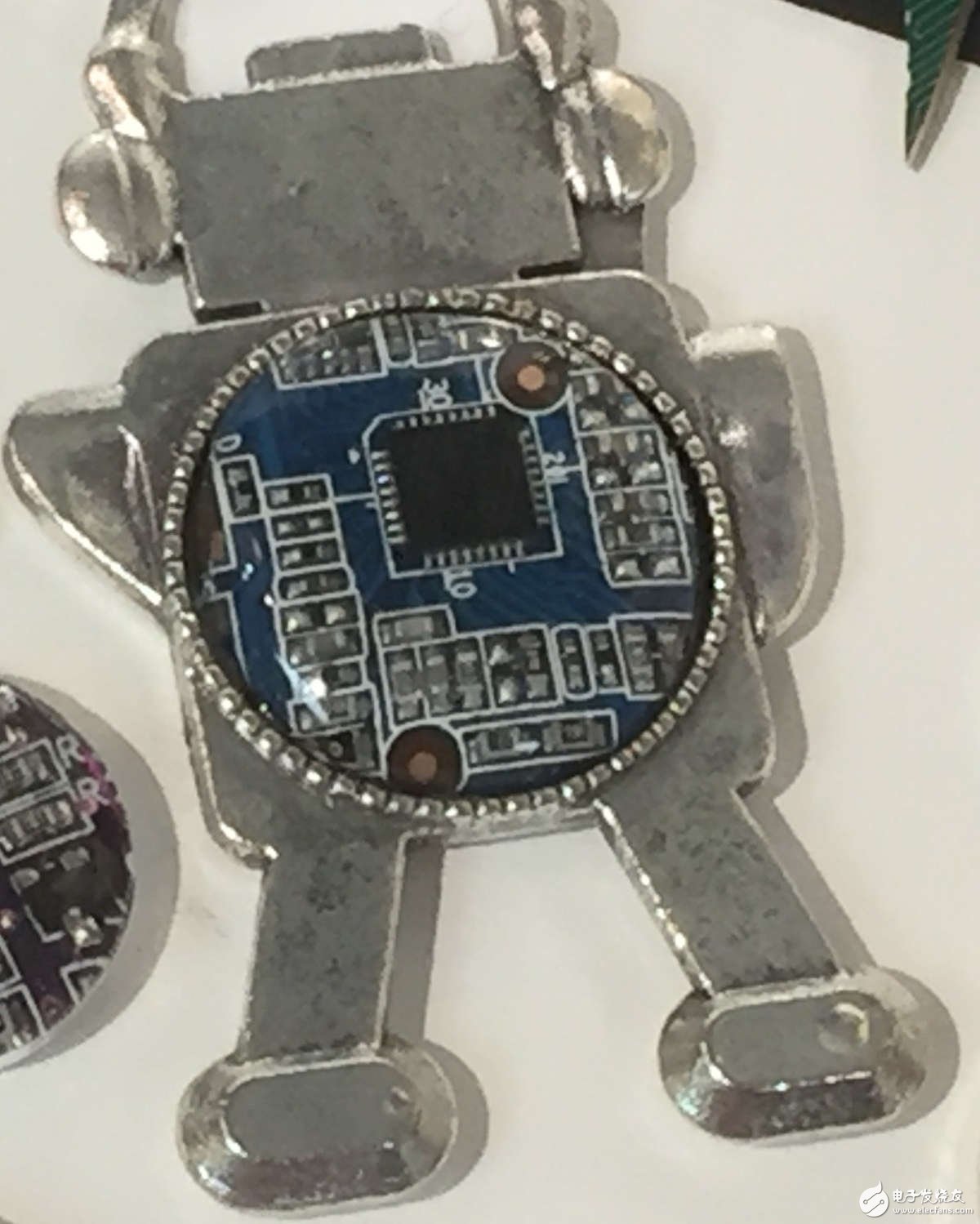I was still living at home, and my father worked at a PCB manufacturing company called Parlex. We needed to add some tripods to the kitchen and used some scrapped boards. The tripod is done, no need to spend money, work well. This experience is worth sharing.
People make some rare things with outdated or scrapped PCBs and components. This is not new, but it is used for what to do, but it is constantly creative. Recently I went to Rochester, New York to travel, and occasionally went to a jewelry store (not an electronics store), and saw the jewelry placed on the table was made from PCB. I can't wait to talk to its designers.

Figure 1: The best-selling part of Amanda Preske's jewelry store.
Amanda Preske is the designer of the Circuit Breaker Labs jewelry store. She spent about ten years earning a bachelor's degree in chemistry from Rochester Institute of Technology and a Ph.D. in semiconductor nanocrystal synthesis from the University of Rochester. She started this company in Rochester, but now lives near Washington DC. She uses her chemistry to make rings, pendants, cufflinks, tie clips and other accessories from resin. Shortly after returning from Rochester, I called Preske.

Figure 2: This set of bracelets, earrings and necklaces sells for as much as $120.
My brother has some old computers that are useless. He asked if I could use them to do something. I have been making jewelry all the time, so I accepted this challenging proposal. I was learning how to make jewelry with resin. It seems like a good way to combine PCB and resin, so I showed some of these small accessories at several craft shows in Rochester. The response was very good. I expanded the product range from the original pendant to nearly 90, including rings, cufflinks, tie clips and wallets, and decided to start the business full time. I have been making jewelry for 12 years, and this is my full time job.

Figure 3: Amanda Preske makes jewelry at home.
At the beginning, I mainly relied on my persistence, and I thought I must cut it. I used a Dremel cutting wheel to manually cut the board and then sand it with sandpaper. After a while, I installed a computer numerical control (CNC) cutter, which used it to cut a perfect circle. If you want to cut out more complex shapes, such as robots, you can also do this by programming the cutter.

Figure 4: The edge of the PCB is sufficient to adapt the surface tension of the resin to the shape of the board.
I studied chemistry, so I can see how even the most subtle changes can change the chemical reaction results. This is the case with epoxy. The resin I used was a mixture of two parts that polymerized within 24 to 48 hours. In the 30 minutes after the resin is mixed, I carefully control the temperature and humidity, both of which affect the viscosity and surface tension. Bubbles are the biggest factor affecting clarity, they may be eliminated by themselves, or they can be removed manually. Some people use a vacuum chamber to ensure that the epoxy does not create bubbles, but this will incur additional costs for me. So I rely on my hands and eyes to do it all.

Figure 5: By programming the CNC cutter, Preske is able to make jewelry of any shape, such as a robot.
Temperature and humidity control requirements do not have to be too strict. I make jewelry in the basement, where the humidity is generally low. My work area is a confined space - it's actually a closet, and here is my resin processing area. I use heaters and incandescent lamps to control the temperature. Usually I only feel the temperature by experience. If I take a thermometer to measure the reading, I can analyze it. There is a suitable window for adjusting the temperature and humidity to produce the desired result. As for the humidity, the resin I use does not need to consider this factor. There are many types of resins that are sensitive to different conditions.
Although the resin I use is less sensitive to humidity, it is still not desirable for the environment to be too moist to cause moisture to mix with the resin, as this can result in poor chemical reactions.
How do you stick the board to the desired shape after cutting it into the desired shape?Most of the jewelry is embedded in a metal cup or ramp. This is a very shallow cup with a thin side wall. Since the resin has a surface tension, it can stand up in the cup and bulge upward to form a meniscus. It looks like a lens. For example, in the abdomen of the robot, I used the characteristics that the resin tried to stay together without spreading. As long as the resin is not too much, its surface tension can hold them together. The surface of this resin is very smooth and does not require further polishing or finishing. Whether it is the bevel or the edge of the board, the resin can be adapted to any contour.
How do you attach the jewelry hardware to the board?It depends on what the jewelry to be made. I can solder pure silver to the board without a soldering iron, but with a soldering gun. Some jewelry already comes with hardware. When I need glue, I like to use E6000 glue.
Power Station 600W,Outdoor Mobile Power Station,Portable Power Bank,Mobile Power Bank
Guangdong pisen electronics co., ltd , https://www.pisenpro.com